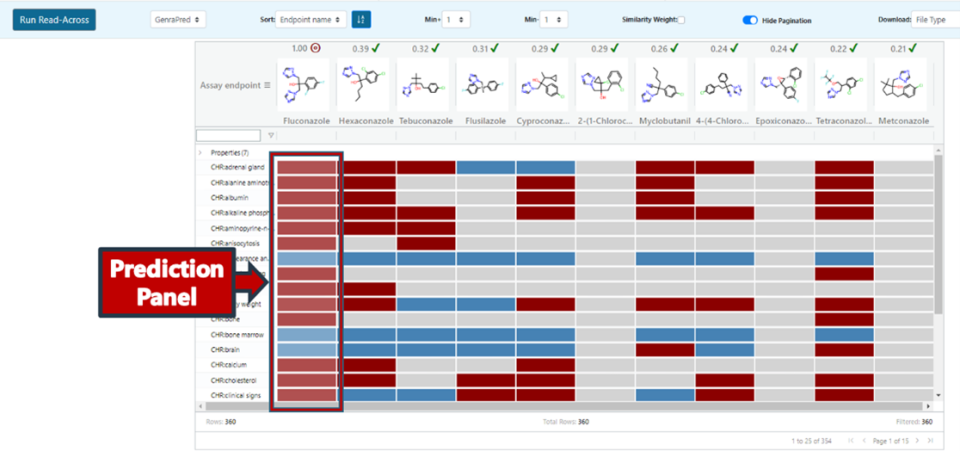GenRA Manual: Read-Across
Previous chapter: Analogue Evaluation

When the user is satisfied with the source analogues selected, a prediction can be generated by clicking on “Run Read-across” (Figure 23). There are 2 engines, GenraPred and GenraPy. GenraPred is the legacy prediction engine used for binary predictions only. GenraPy is used for both binary and continuous predictions. Both engines have confidence reporting for their binary predictions. The predictions will populate in the first column of the panel 4 matrix (Figure 24). The opacity of the predictions reflects the confidence in the prediction made. A more faintly colored prediction will denote higher confidence in the prediction. Some study-toxicity combinations for the target substance might have been associated existing information, in which case the actual and predicted outcomes will be reported as part of the hover over information for a given cell. If the predicted outcome is in agreement with the actual outcome, a True Positive (TP) or True Negative (TN) will be returned. If the predicted outcome is not in agreement with the actual outcome, then a False Positive (FP) or False Negative (FN) will be returned.
The toxicity effects predicted can be filtered using the white box beside an image of a funnel. The predictions can also be modified by specifying thresholds for the number of positive and negative activity results required across the analogues using the Min+ and Min- filters. The numbers above any source analogue reflects the similarity index. Clicking on the Similarity weight checkbox modifies the size of all analogue boxes to reflect the pairwise similarity metric.

The main options for predictions relative to the 2 prediction engines are shown in Table 1.
|
Activity Outcome |
Confidence |
Engine |
|---|---|---|
|
In vivo binary toxicity ToxRefDB outcomes |
Yes |
GenraPred |
|
In vivo binary toxicity ToxRefDB outcomes |
Yes |
GenraPy |
|
In vivo potency toxicity ToxRefDB outcomes |
No |
GenraPy |
|
In vitro ToxCast assay hitcalls |
Yes |
GenraPred |
|
In vitro ToxCast assay hitcalls |
Yes |
GenraPy |
Next chapter: Uncertainty Assessment and Conclusions
